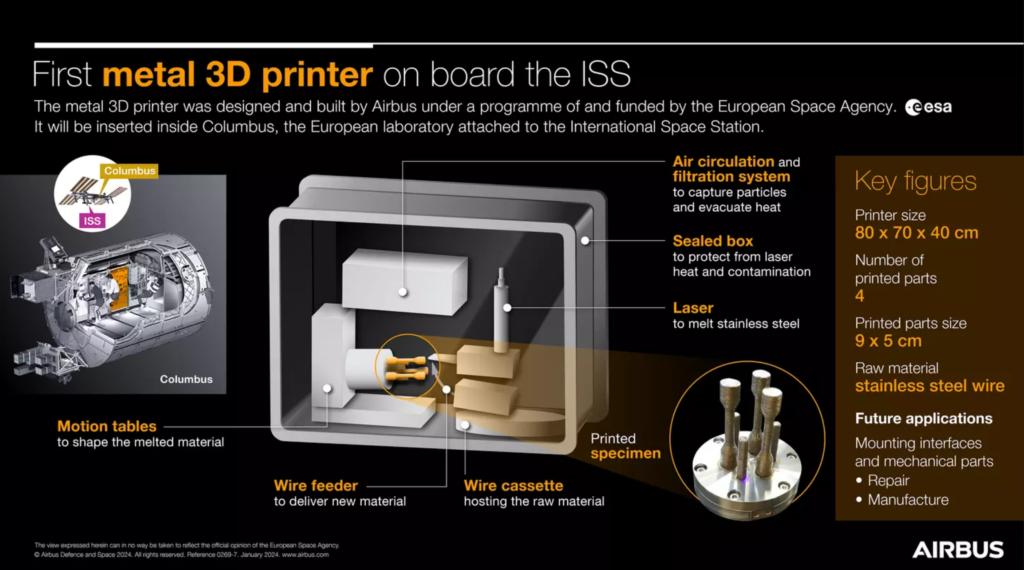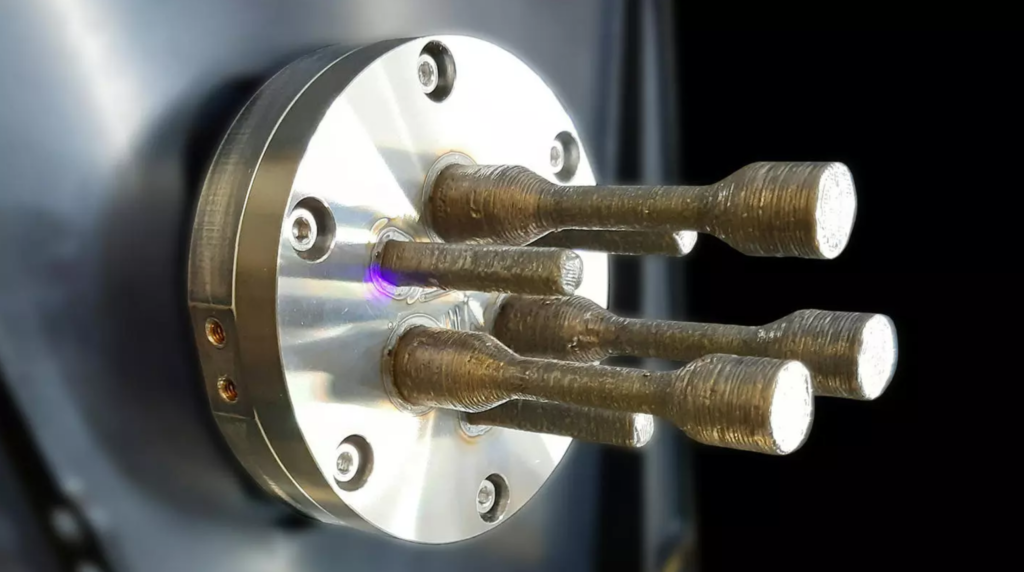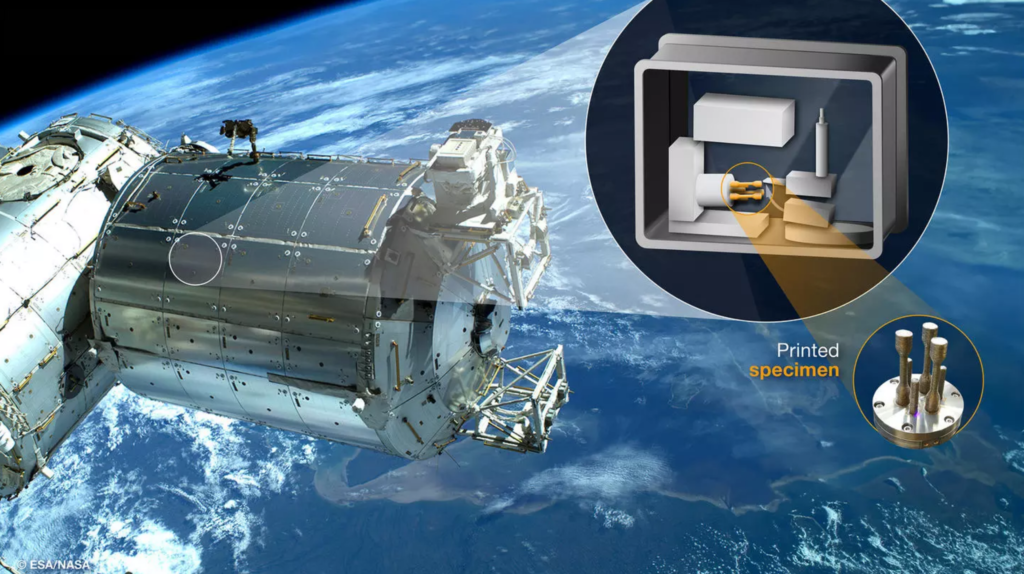Airbus developed the first metal 3D printer for space, for the European Space Agency (ESA). The printer will be tested on the Columbus module of the International Space Station (ISS).
Since Additive Manufacturing (AM) is a revolutionizing technology that can be used for printing houses or spacecraft parts, this can be a game changer for future missions to the Moon and Mars. Although the ISS already has a couple of plastic 3D printers used for replacing and repairing plastic parts, not everything can be manufactured from plastic.

Gwenaëlle Aridon, Airbus Space Assembly lead engineer, said, “The metal 3D printer will bring new on-orbit manufacturing capabilities, including the possibility to produce load-bearing structural parts that are more resilient than a plastic equivalent. Astronauts will be able to directly manufacture tools such as wrenches or mounting interfaces that could connect several parts together. The flexibility and rapid availability of 3D printing will greatly improve astronauts’ autonomy.”
Still, raw material has to be transported, but the efficiency with printing is increased in comparison to transporting the whole. On the other hand, metal 3D printing in space includes an additional set of technical challenges, one of which is safety. Hence, the printer has to be positioned in a sealed metal box, protecting the ISS from the aggressive printing environment created by the laser and the generated heat, in addition to capturing the emitted fumes.
Sébastien Girault, metal 3D printer system engineer at Airbus, said, “The first challenge with this technology demonstrator was size. On Earth, current metal 3D printers are installed in a minimum ten square metre laboratory,”, adding that “To create the prototype for the ISS, we had to shrink the printer to the size of a washing machine”, and “At this size, we can print parts with a volume of nine centimetres high and five centimetres wide,”

Article Source: Airbus






